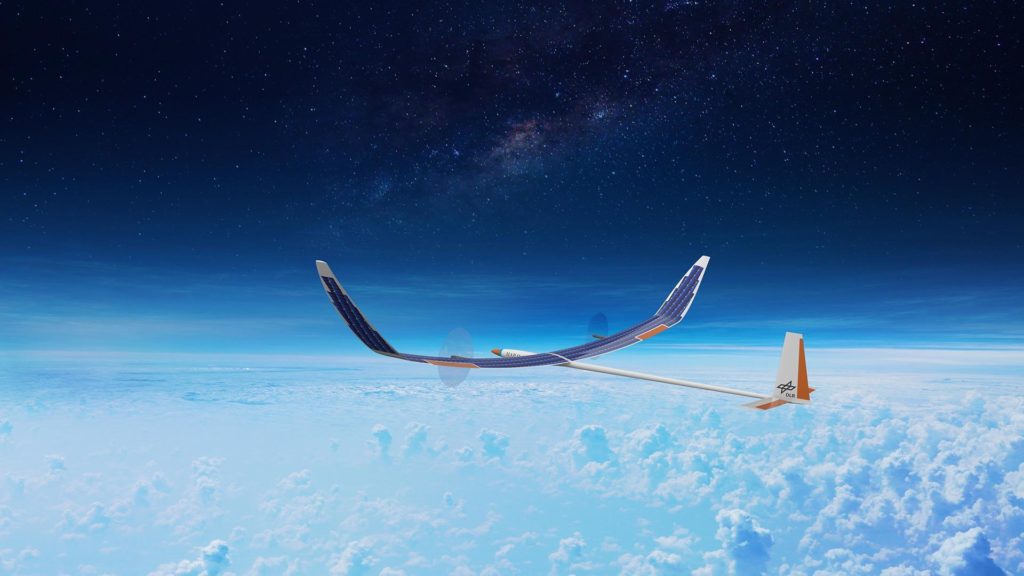DLR high-altitude unmanned solar platform – HAP alpha
High-flying uncrewed platforms represent a solar-powered alternative to satellites for sustainably performing long-term tasks in the field of Earth remote sensing. High-Altitude Platforms (HAPs) can be manufactured and launched more economically than their counterparts in Earth orbit. Unlike satellites, they can also be landed again and reused for additional missions, so they effectively avoid producing space debris.
HAP alpha is a joint project being conducted by 16 DLR institutes and facilities in which an uncrewed and solar-powered high-altitude platform will be built and flight-tested as a technology demonstrator. HAP alpha will later be able to ascend into the lower stratosphere (at an altitude of approximately 20 kilometres) using solar power alone and conduct Earth observation or scientific experiments there. In addition to the platform itself, the project includes the development of a mobile ground station and two payloads – a high-resolution camera system and a synthetic aperture radar.
The exhibit is a stylised tabletop model of HAP alpha. It illustrates the delicate lightweight construction required for this type of solar-powered platform. At the same time, the model can also be used to explain the main development challenges, such as integrating solar cells into the wings. The structure of HAP alpha is unique among research institutions in Europe and showcases DLR’s expertise in the development, construction and testing of such novel technologies.
The optional video shows how a high-flying platform like HAP alpha and its payloads could be deployed by demonstrating three mission scenarios. In addition to increasing sustainability and avoiding the creation of space debris, the project also seeks to address other topical issues such as climate-friendly flight.
Link:
German Aerospace Centre (DLR)
Institute of Flight Systems
Florian Nikodem · Email Florian.Nikodem@dlr.de
